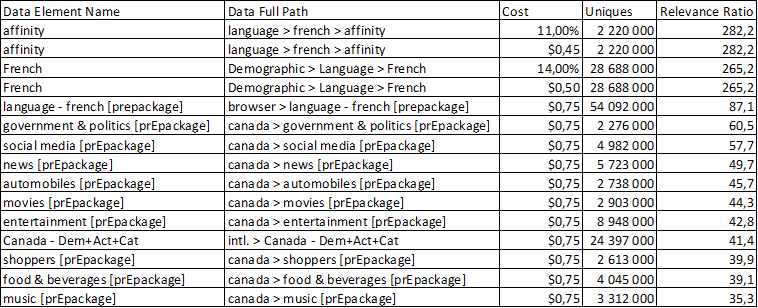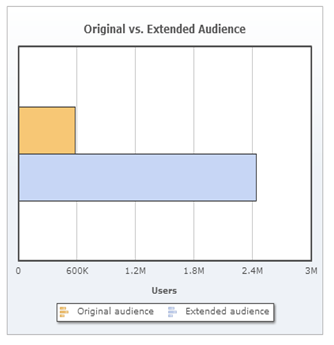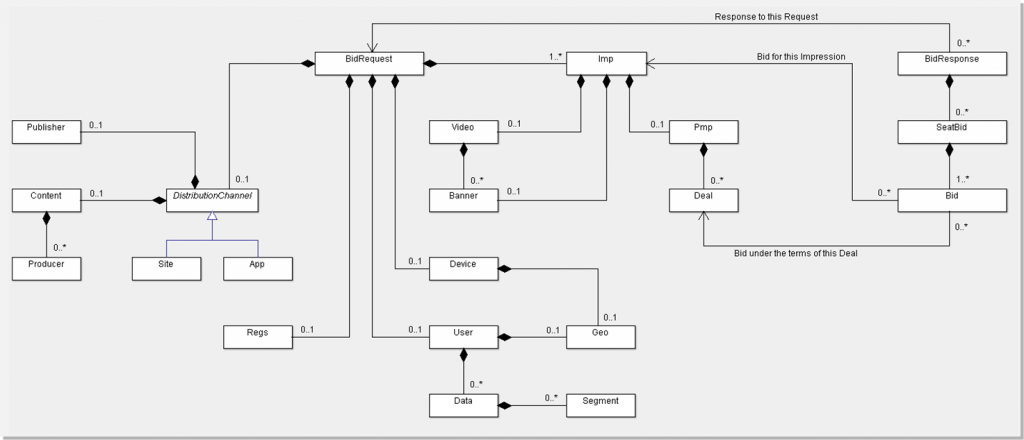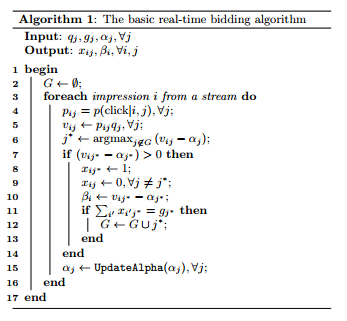Contributor
Programmatic buying and audience data
Contributor
Amihai Ulman , a programmatic buying thought leader and COO at MASS Exchange, just questioned the use of the term “programmatic”. According to him, the word 'programmatic' is no longer very adequate to fully describe the technological platforms that manage our purchases on the Ad Exchanges. Instead, according to him, the term Attention Markets should be used .
For professionals in the ad tech and digital media world, especially those who are more geeky, the name Attention Markets is a lot less sexy than the term programmatic. So initially, I was a little refractory to this new name.
But reading his excellent post on the issue, I realized his arguments . In fact, its turning point as far as I'm concerned is challenging the misguided notion that the primary reason for using Real-Time-Bidding is for automation. It's wrong. The reality is that automation in programmatic buying is an effect of this technology, not its cause. Automating a bad marketing approach will do nothing more than automate your bad approach, it doesn't fix anything by itself.
The real cause of programmatic buying, to quote Ulman, is this:
This industry is about the time and attention people are willing to give to a message, it's about understanding the economic decisions people have to make and offering them [relevant] suggestions.
At the epicenter of this understanding is the notion of audience data management. This is the true power of programmatic buying, the ability to reach a consumer at the right time, in the right place, in the right context and at an auction cost per impression delivered based on real market forces. all in real time.
With this in mind, the engineers who designed the machine learning algorithms of the various DSPs (Demand-Side-Platforms), did so with the aim of understanding the behavior of consumers (the audience) at multiple levels.
For example, if you are an airline and you sell plane tickets around the world, how do you know which is the best audience to target, on which websites to reach them or in which context will they be more willing to buy? plane tickets to a specific destination, say Italy?
A first instinct would be to target web banners in all environments that relate either to traveling to Italy or buying tickets in Italy, such as Tripadvisor or Kayak.
The problem, however, is that the advertising inventory of these web environments is both limited, highly competitive and above all, very expensive from a CPM point of view. Moreover, a page full of prices for flights to Italy offers little in terms of audience learning. User behavior in these environments is quite linear. People come, they buy their tickets on the site, they leave, that's all. Why did the consumer choose an airline x or y can be linked to a dozen factors such as price, available flight hours, affinity with the airline, etc.
It's harder for us to influence supply variables like price and flight times to Italy as an advertiser (it's the product team's job after all). On the other hand, if we knew a little more about the consumers who visit these Italy flight aggregation pages, we could potentially influence their brand affinity, and even their purchasing decision as a result.
This is where audience data becomes an essential strategic layer in programmatic buying, because that's exactly what it can help us do. That is to say, data can teach us to better know and understand our target consumer. It is by knowing our audience well that we will be able to optimize our Display campaigns in such a way as to obtain their attention, which of course ideally leads to conversion.

WHAT IS AUDIENCE DATA, MORE SPECIFICALLY?
Essentially, audience data, from a digital media perspective, is the digital trace of user behavior that has been captured and cataloged in some analytics platform. Once “interpreted” by the software that collects it, this audience data can be transformed into a more specific segment. For example, some digital behavior data could turn into a segment of consumers looking for a mortgage for first-time buyers.
There are tons of this type of data across the digital ecosystem, especially on the web or in our devices such as smartphones, tablets, etc. Indeed, when we say tons it means several hundred and even several thousand Terabytes of data per day.
Facebook alone generates over 500 Terabytes of data daily. Add to that the 65 billion points of sale that are digitally labeled every year (and we're only talking about the United States here), as well as the 154 billion emails that go around every day, that's data. audience, Big Data!
Given that 75% of all digital data is generated by consumers, that is to say you and me, it becomes a golden opportunity for advertisers to be able to access so much information, to try to understand the consumer and his consumption. But how now to capture and use all this data?
In the world of programmatic buying or attention markets, there are three categories of data available:
3RD-PARTY DATA , DATA THAT BELONGS TO A THIRD PARTY.
In the digital industry, there are companies, of which Google and Facebook are the best examples, whose business model is the accumulation and monetization of audience data on their respective platforms. These companies then become audience data providers capable of selling you highly targeted behavioral segments, such as a pool of users “looking for a flight to Italy from Montreal.” These providers offer their data for sale on the DMPs (Data Management Platforms) that we will discuss in the next post. This data may be juxtaposed with the purchase of an impression on ad auctions accessed through a DSP. For those outraged by this practice, take note of this saying, "if you haven't paid for a service,
2ND-PARTY DATA , THE DATA THAT BELONGS TO YOUR BUSINESS PARTNERS.
For example, if your brand is the official sponsor of a major sporting event (as is the case for some of our clients), you may request access to audience data from the site of that event. Therefore, this would give you the right to communicate with this audience through web advertising.
A priori, the audience on which you will put the most energy is your own audience, therefore the 1st Party-data. There are several ways to collect and segment your audience data, but this may require more advanced data strategies, which we'll cover in a later post. For now, if we stick to the basics, the easiest way to build an audience pool is to install remarketing tags from one or more DSPs on your website.
1ST PARTY DATA , THE DATA THAT BELONGS TO YOUR BRAND OR COMPANY.
This is data about consumers who have interacted with your business, such as your email list, CRM data, cookies from your website visitors, etc.
Without going into complex data architecture, at the bare minimum, you'll install conversion chips on your product or service pages, as well as your digital cart abandonment pages. On the one hand, this will allow you to follow the conversions generated by your DSP(s), while having the possibility of retargeting this audience, either for upsale, re-sale or cross-sale.
You will also install pixels on all the pages of your site to capture the pool of audience showing interest in your brand or your products / services in general. From this pool, you will be able to develop a remarketing strategy in terms of offer, creative, frequency levels, segments, etc. To ensure an optimal attribution model, it will be important to run your campaigns through an ad server, including your SEM campaigns. Because one of the characteristics of Display, both in programmatic and in Premium, is that the channel tends to influence the volume and velocity of your brand searches on search engines. But since this subject is rather heavy in itself, we will put this discussion aside for the moment.
That said, to come back to your 1st-Party data, one of the advantages of installing remarketing chips on your conversion pages is that they will allow you to send learnings to the optimization algorithm of your DSP about the typical profile of people who convert on your site. Who are they, what are their browsing habits, what do they typically do before converting? Your DSP's machine learning algorithm is constantly listening to Ad Exchanges to “understand” your consumers' conversion behavior.
From at least a hundred behavioral data points, the robot paints a portrait of your ideal customer. From there, it sifts through the billions of ad impressions made available for auction through Supply-Side-Platforms (SSPs), to find and “decide” when to bid to win an impression, with the goal of to generate a conversion at the best cost per acquisition (CPA).
If the conversion objective is the sale of our famous plane ticket for Italy, the algorithm will not stop only at travel sites (ie Kayak) in its decision making, unless you have specified a list of exclusive sites in your RTB campaign. Otherwise, on average, a DSP's AI algorithm can make up to 8000 decisions per second before issuing a bid request, depending on a ton of complex variables. So the choice of website is only one of many other factors to consider. This is what we call in English “impression-level decisioning”.
If we compare this to the decision-making of a traditional media planner who has to write his 25-line media plan in an Excel file to achieve the same goal, let's say that your media decision-making skills have just been amplified by an exponent of at least 5 😉
Now, remarketing is very interesting, but that's not all. Still depending on our audience pool captured by our conversion chips, i.e. our buyers, it is also possible for the algorithm to identify and then target, thanks to its listening to Ad Exchanges, a new audience whose characteristics and profile are very similar to those of the buyers on your site. This is what we call the famous “Look-alike Modeling” in programmatic jargon.
Using a partly heuristic formula, the algorithm helps you find an audience similar to your most profitable audience. This audience is somewhere among the millions of micro-segments of 3rd party data offered by providers like BluKai, Dataline, Acxiom, Arcametrics, etc.
In the background, using a DMP, the machine will analyze your 1st Party data to find the segments of 3rd Party data that have the strongest connection with your most profitable consumer audience. This complicity will be expressed mathematically in the form of an index or a similarity ratio. The higher the index, the more the 3rd Party segment “looks like” your ticket buyers to Italy. In addition, some DSPs offer the possibility of calculating the potential volume of conversions and even the ROI of each segment. This should be taken with a grain of salt, but it is still an interesting indicator in certain cases.
What is good, in addition to all this, is that it is possible to analyze these segments so that you, as an advertiser, can extract qualitative and quantitative about the persona of your typical consumer. These learnings can be escalated to the product team and the creative team or agency, to tailor the offer and message to your audience most likely to convert.
In fact, your analysis grid could look like this:

In addition, by targeting your Look-alike audience, all these clicks to your site will of course turn into 1st Party data, thus increasing your proprietary audience pool. This will have the effect of creating audience data that will become a real long-term asset for your business, just like your email list or your customer databases. This whole process is called audience extension and in some cases, Adviso has been able to increase our clients' 1st Party data pool from 600,000 to 2,000,000 users thanks to these techniques.

Example of the growth potential of Look-alike Modeling
That said, the detail of the how and why behind all this machine learning is, shall we say, quite complicated. Truth be told, some of the pioneers of the programmatic universe are ex-NASA engineers, who converted the technology behind gizmos like the Mars Exploration Rover for marketing use, just to give you an idea.
But to give you a simplified view of what happens between the request for an auction impression and the juxtaposition of a segment of audience data during a decision made by the DSP, here is a diagram taken from the protocol OpenRTB 2.1:

Image source: Nexage OpenRTB Technical Reference
Mathematically speaking, if you're really curious, the basic algorithm formula of a DSP looks a bit like this:

Source: Real-Time Bidding Algorithms for Performance-Based Display Ad Allocation (Ye Chen et al)
HOW DO YOU DO ALL OF THIS THE RIGHT WAY?!
The challenge now is in the execution. Considering that we have only touched the surface of the subject, if this article seems the least complex to you, the learning curve may be more or less long before mastering programmatic buying and audience data. in your campaigns.
Also, if your agency is handling your programmatic buying, they may not have in-house specialists to do so. So it's quite possible that you won't be able to do much more than programmatic buying 101, or even sign an insertion order with full-service companies like Exchange Lab or Chango (who generally do a good job .) There is also the scenario of agencies that have their proprietary DSP/DMP and don't tend to share learnings transparently, leaving you in a black box.
By doing so, you will likely struggle to get more granular audience reports for more advanced marketing uses. This is not the case for all agencies, because Adviso (without wanting to preach for our parish) is the type of agency with analysts and campaign managers (called RTB traders ) capable of producing this type of analysis. for its customers. It's up to you to see with your agency if this is the case.
We always recommend that the customer be the owner of this type of data. After all, it's YOUR audience, not your agency's. So why leave this valuable asset with someone else?
If you would like advice on how to manage your audience data or on a longer-term programmatic buying strategy for your business, our experts at Adviso are available to help you through the process. So do not hesitate to contact us .

-1.png)
-1.png)






